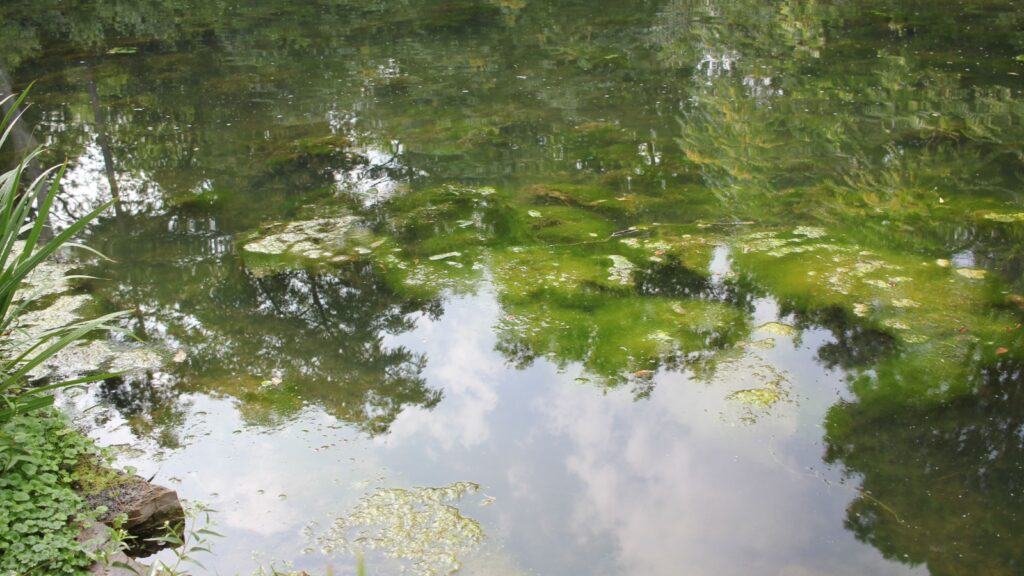Ever wondered what’s swimming in your local pond? Beneath the surface, a whole world of tiny creatures exists, invisible to the naked eye. Let’s dive into the fascinating realm of microscopic pond life and discover 12 amazing organisms that call UK ponds home.
Water Bears: Tiny Tanks of the Pond
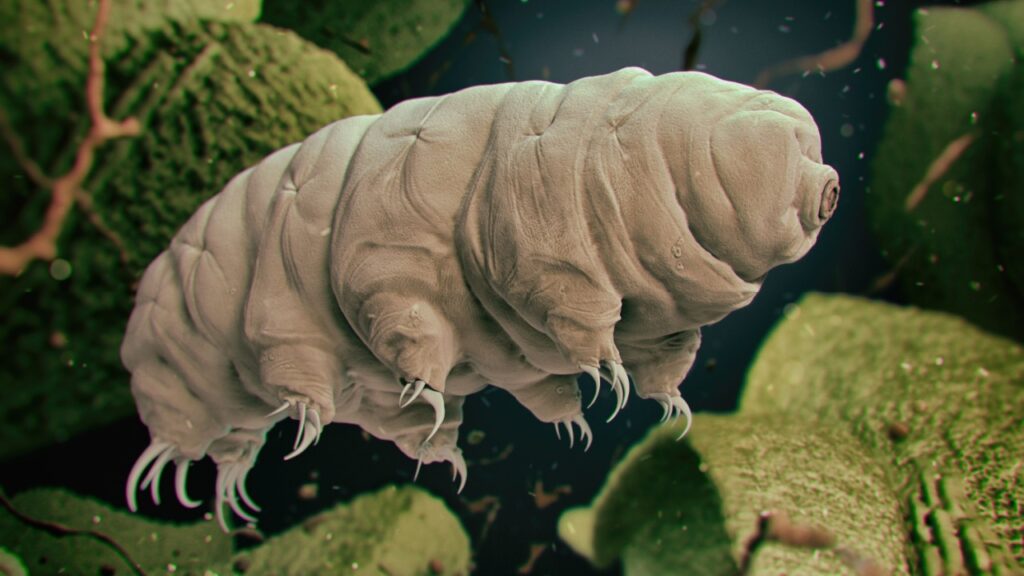
Water bears, or tardigrades, are incredible survivors. These eight-legged micro-animals can withstand extreme temperatures and even survive in space! They’re found in most UK ponds, feeding on plant cells and smaller organisms. Water bears are harmless to humans but tough as nails in their tiny world.
Daphnia: See-Through Water Fleas
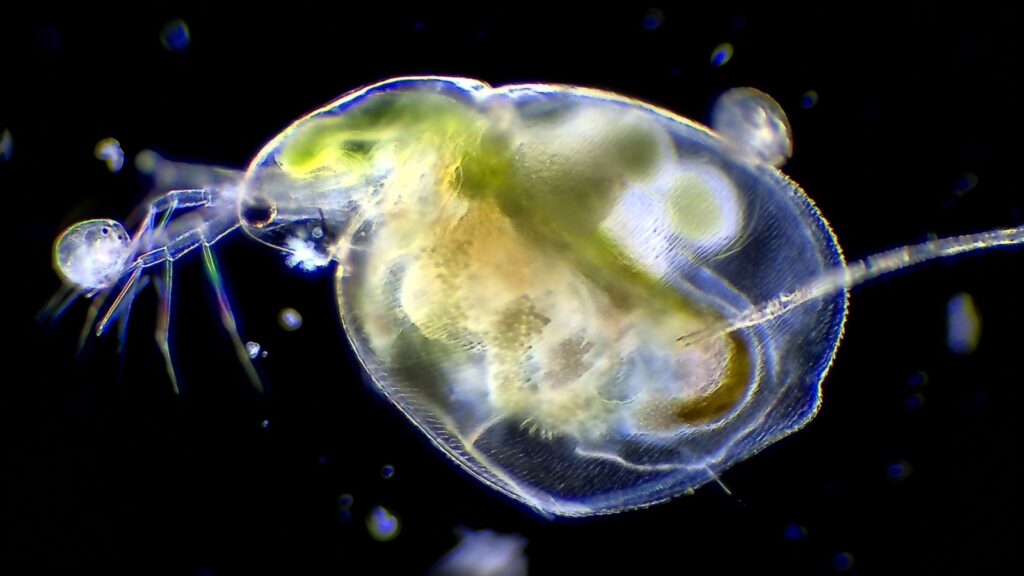
Daphnia, nicknamed water fleas, are transparent crustaceans that live in ponds. You can actually see their heart beating through their clear body! These little creatures eat algae and bacteria, helping to keep pond water clean. Fish love to munch on daphnia, making them an important part of the pond food chain.
Hydra: Many-Armed Micro-Monsters
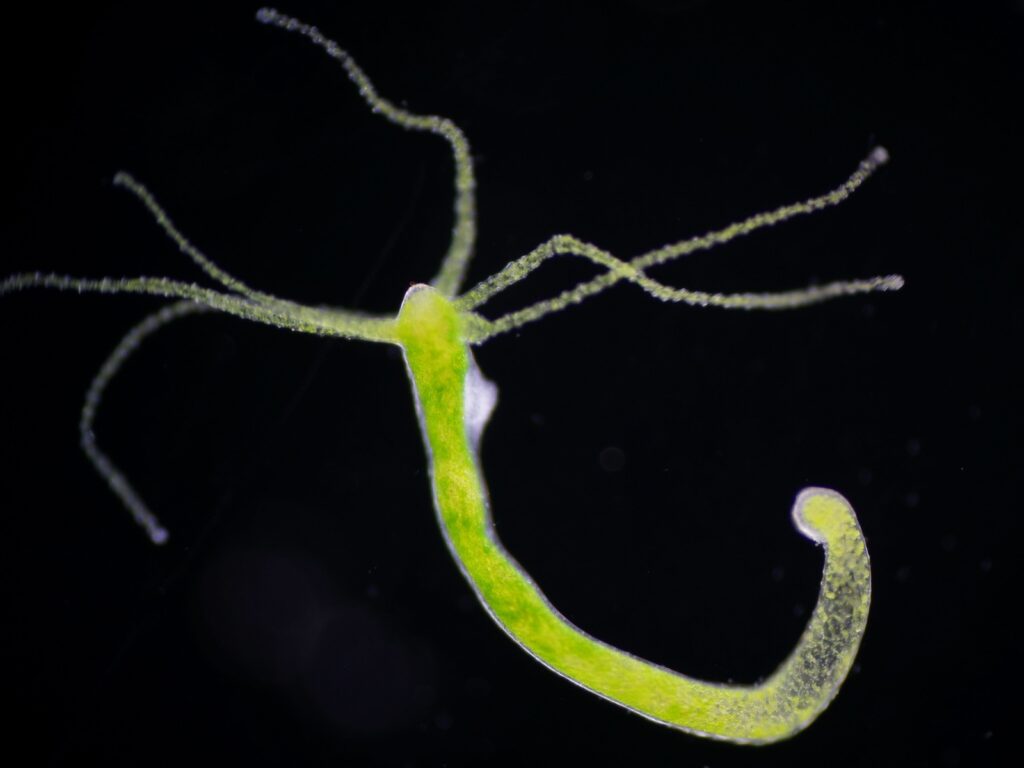
Hydra are small, tube-shaped animals with tentacles around their mouth. They’re related to jellyfish and can regrow body parts if injured. Hydra use their stinging tentacles to catch tiny prey. While they sound scary, they’re too small to harm humans and play a vital role in controlling other pond populations.
Rotifers: The Wheel Animalcules
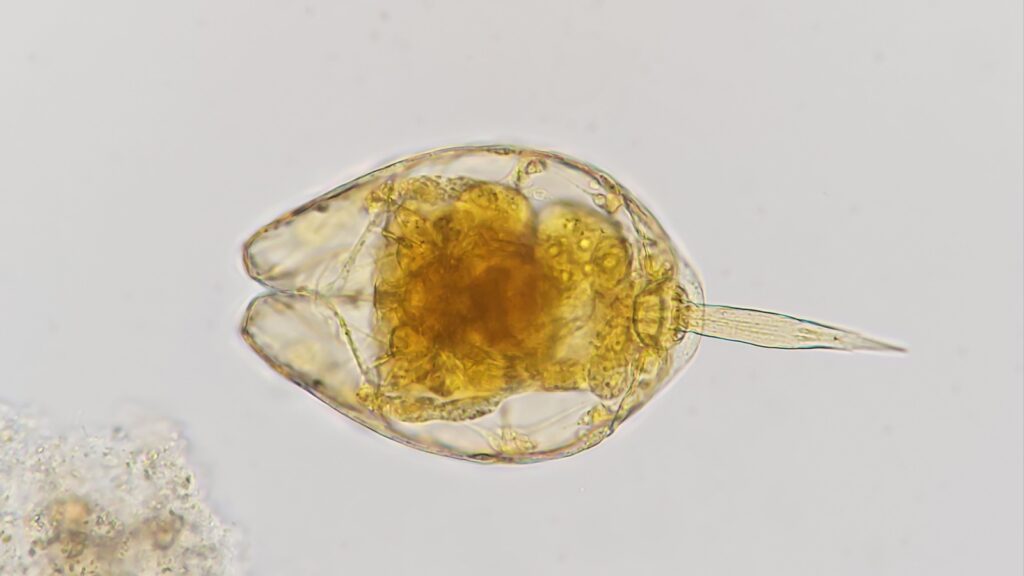
Rotifers are unique creatures with a crown of tiny hairs that looks like a spinning wheel. This “wheel” creates water currents to catch food. Rotifers eat bacteria and algae, helping to keep ponds clean. They’re found in almost every UK pond and are a favorite snack for larger pond dwellers.
Stentor: Trumpet-Shaped Giants
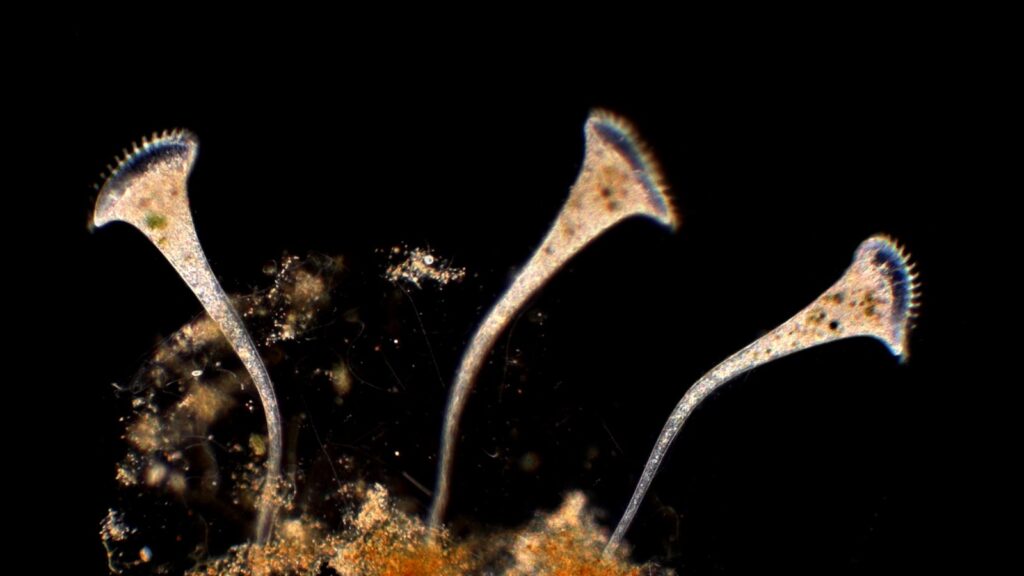
Stentor are large, single-celled organisms shaped like trumpets. Despite being made of just one cell, they’re giants in the microscopic world. Stentor can change shape and stick to surfaces. They feed on bacteria and smaller organisms, playing a key role in the pond’s food web.
Volvox: Living Green Balls
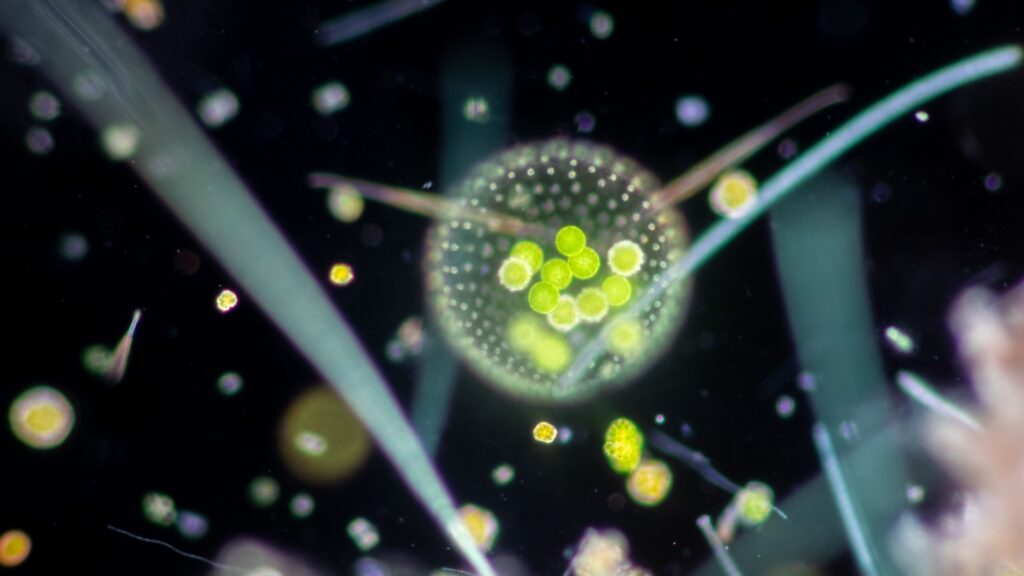
Volvox are fascinating algae that form hollow balls made of thousands of cells. These green spheres can roll through the water by working together. Volvox make their own food using sunlight and provide oxygen for other pond life. They’re a great example of simple organisms teaming up to thrive.
Paramecium: Slipper-Shaped Speedsters
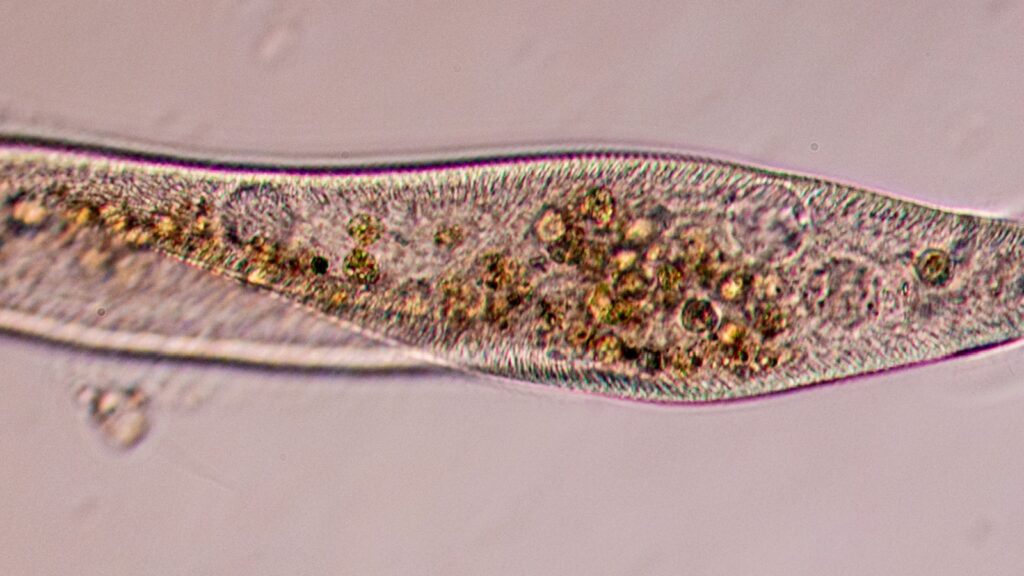
Paramecia are single-celled organisms covered in tiny hairs called cilia. These cilia help them zoom through the water and catch food. Paramecia eat bacteria and smaller organisms, helping to keep the pond balanced. Scientists often study these speedy swimmers to learn about cell biology.
Euglena: The Best of Both Worlds
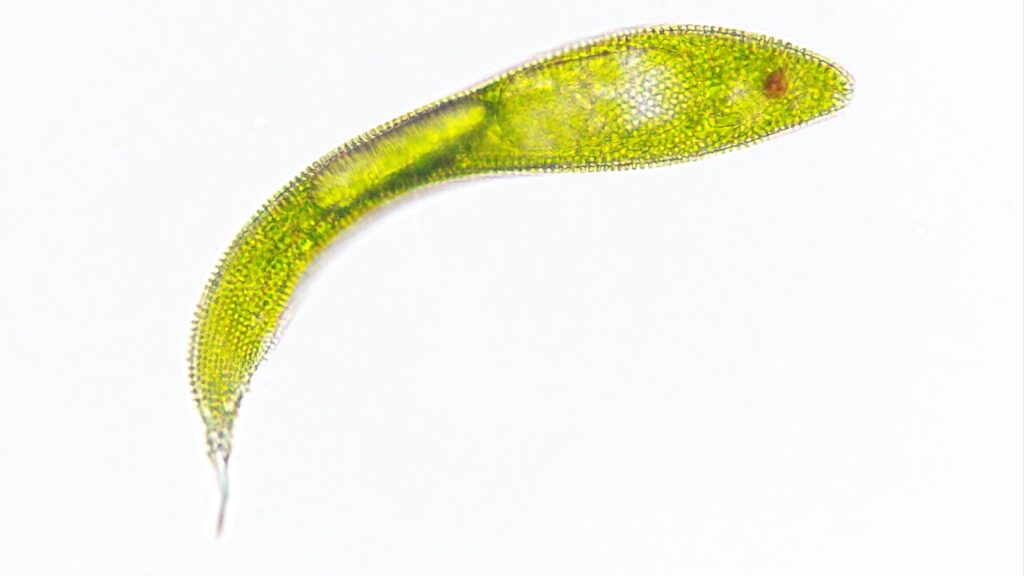
Euglena are unique creatures that are part plant, part animal. They can make their own food using sunlight, but also eat other organisms. Euglena move using a long tail called a flagellum. These versatile organisms play multiple roles in the pond ecosystem, adapting to different conditions.
Amoeba: Shape-Shifting Hunters
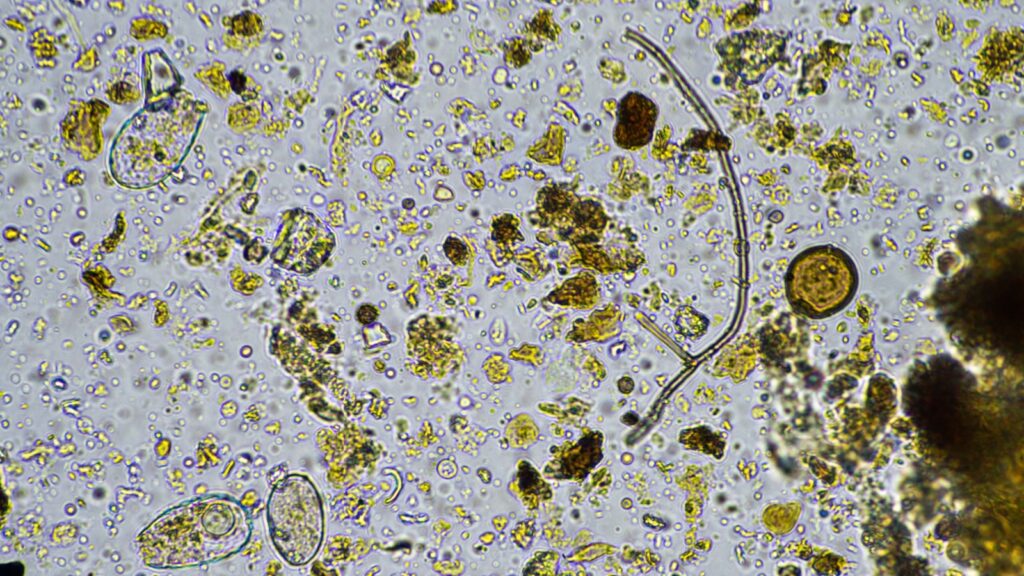
Amoebae are blob-like organisms that can change shape as they move. They extend parts of their body to surround and eat their prey. Amoebae feed on bacteria and other small pond life. These shape-shifters help control bacterial populations in ponds, keeping the ecosystem balanced.
Vorticella: Living Bells on Springs
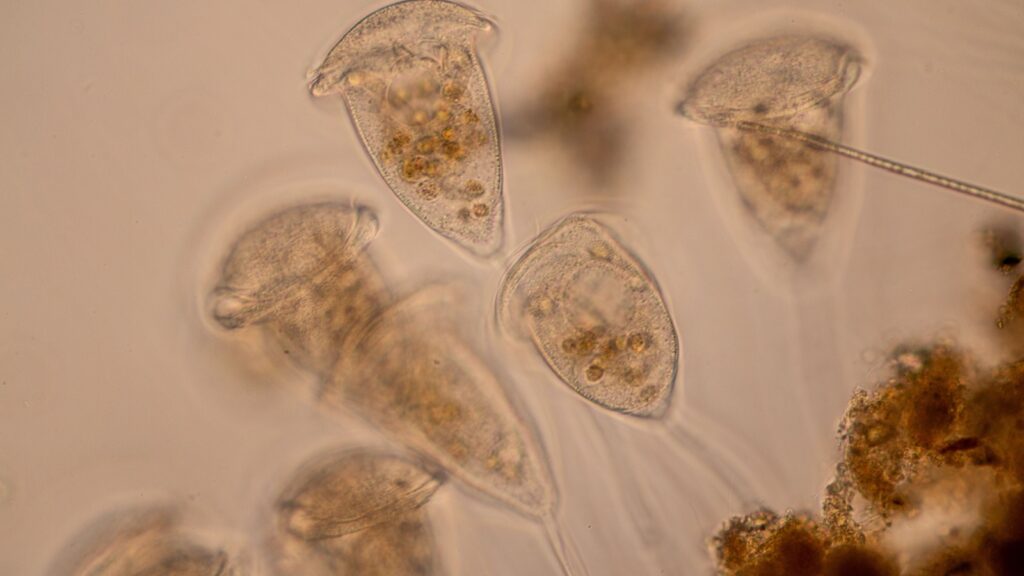
Vorticella are bell-shaped organisms attached to surfaces by a long stalk. When disturbed, they can quickly contract their stalk, pulling away from danger. Vorticella eat bacteria and tiny particles floating in the water. They help keep pond water clean and provide food for larger creatures.
Cyclops: One-Eyed Wanderers
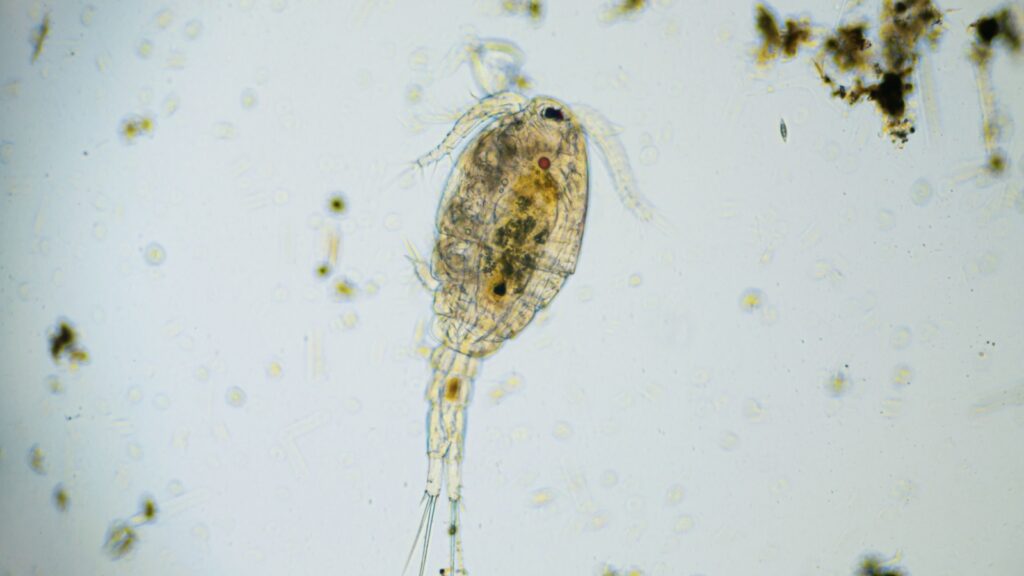
Cyclops are tiny crustaceans named after the one-eyed giant in Greek myths. They have a single eye in the middle of their head and long antennae. Cyclops eat algae and smaller organisms, and are an important food source for fish. These little wanderers are common in UK ponds year-round.
Nematodes: Wriggly Wonders
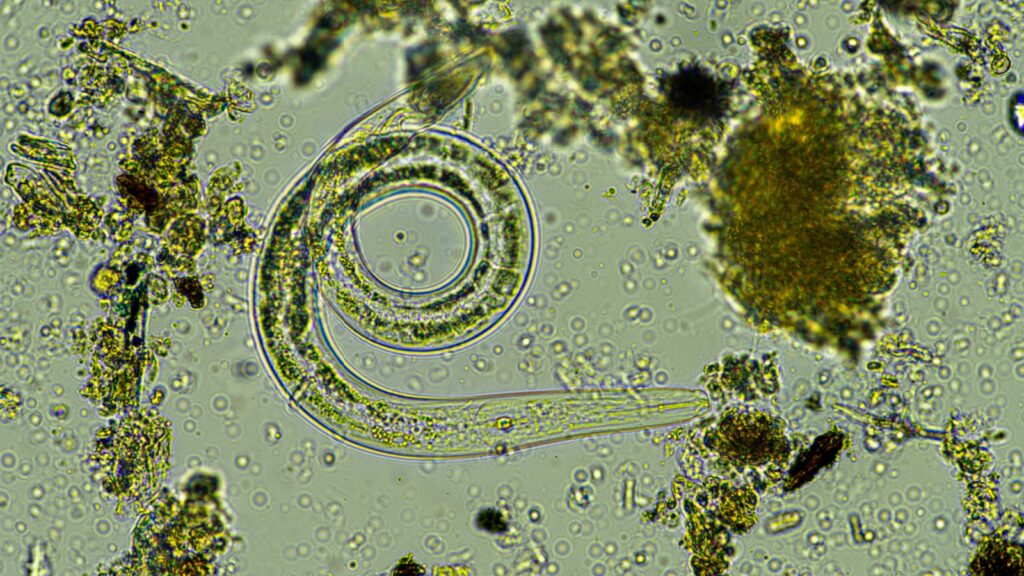
Nematodes are tiny, worm-like animals found in almost every habitat on Earth, including UK ponds. Some help break down dead plants and animals, while others are parasites. Nematodes play crucial roles in nutrient cycling and keeping pond ecosystems healthy. These wriggly wonders are master survivors in the microscopic world.
Becky is a fervent wildlife enthusiast and pet care expert with a diploma in canine nutrition. Her love for animals stretches beyond the domestic, embracing the wild tapestry of global fauna. With over a decade of experience in animal welfare, Becky lends her expertise to OutlandishOwl through insightful articles, captivating wildlife information, and invaluable guidance on pet nutrition. Her work embodies a deep commitment to understanding the intricate lives of animals and a passion for educating others on sustaining natural habitats. Becky's hands-on conservation efforts and her knack for translating complex dietary science into practical pet feeding tips make her an indispensable voice for creatures great and small.

